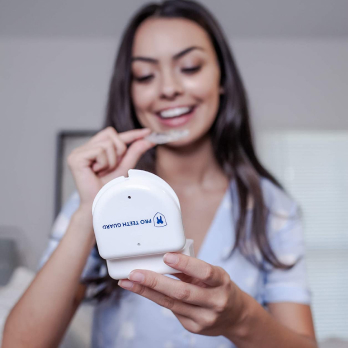Taking Dental Impressions Without Gagging
31st May 2020
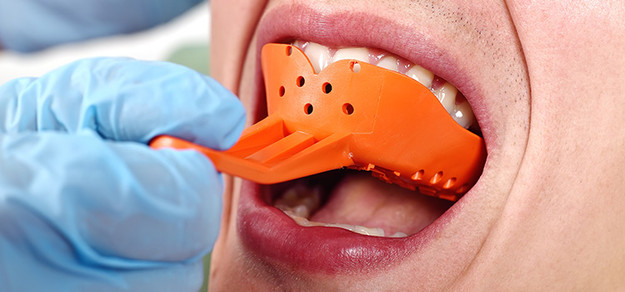
Taking dental impressions without gagging can be a struggle, especially if you have a sensitive gag reflex or anxiety about gagging. Some people struggle more with gagging than others, and it can be a scary experience.
If this is you, I understand. I also have a sensitive gag reflex, and I remember gagging and feeling uncomfortable and scared when my impressions were taken for my night guard. I wish I had known that it could have been easier.
If you have a fear of gagging, there are steps you can take to reduce or even eliminate gagging. Even simply understanding the purpose of the gag reflex can help ease your anxiety about gagging while taking impressions. Continue reading to learn more about the cause of gagging and what you can do to make it better.

Why It’s Important to Take Dental Impressions
If you have a sensitive gag reflex, it’s tempting to skip this step when getting a dental appliance. However, accurate dental impressions are imperative to getting a quality night guard and other oral appliances like dentures or retainers. When you get a night guard, it should fit snugly so it protects your teeth well and doesn’t move. Impressions ensure the device fits correctly, which is important for your oral health.
A few mild gags while you’re taking your impressions won’t likely affect the process. However, if you gag so much you can’t have the impression tray in your mouth long enough to take your impressions, that could be a problem.
Why Taking Impressions Could Trigger a Gag Reflex
There are a few reasons why people tend to gag when taking impressions. Knowing the cause behind your gag reflex can help pinpoint a relevant solution. Let’s review the gag reflex and some common gag reflex triggers.
The Gag Reflex
The gag reflex is a natural response that is actually designed to protect you. When your body senses something foreign is about to enter your digestive tract or airway, the gag reflex is triggered to get that thing out. If you’ve ever seen a baby learn to eat, you’ve undoubtedly seen this in action. As their bodies slowly adjust to eating solid food, the gag reflex becomes less sensitive but never fully leaves.
As you get older, you typically stop gagging when eating food but can still gag if something that feels foreign touches the back of your mouth (otherwise known as your soft palate). However, some people with a sensitive gag reflex still gag while eating, especially with thick and sticky food like bananas and even mashed potatoes.
Your body instinctively reacts by contracting in the throat to push the foreign object out. It’s a survival mechanism that can save your life by preventing you from choking, but it can be inconvenient and embarrassing when you’re trying to take dental impressions. However, it can help to remember your dentist is used to treating patients who gag (also known as “gaggers”).
The Gag Reflex and Dental Impressions
Now that you understand more about the gag reflex, you can probably understand why dental impressions might make you gag. Your body senses something large and foreign is trying to make its way into your digestive tract or airway, and it desperately wants to get that thing out.
Your mouth isn’t used to the size and bulk of the impression tray, so it feels very strange. In addition, the impression material can ooze out of the tray, touching those sensitive areas near the back of your mouth that trigger the gag reflex. Once the tray is in your mouth, it needs to stay there until the impression material sets. This means it can continue to trigger your gag reflex.
Other Causes
Some people have especially strong gag reflexes, which can make this process even more unpleasant. If you are congested and can’t breathe through your nose, if you have a sensitive gag reflex, or if you have a fear of gagging, the reaction could be even worse.

How to Avoid Gagging While Taking Dental Impressions
Even if you have a strong gag reflex and the odds seem stacked against you, there are plenty of ways to reduce your gagging and make the process easier. Try some of the following tips to help with gagging while taking dental impressions:
Change your position:
If you’re lying in a position that causes the impression material to ooze back toward your throat, you’re more likely to gag. Try sitting up, leaning forward, or changing your position so the impression material flows away from your throat. Don’t be afraid to ask your dentist or dental hygienist if you can sit upright in the chair.
Use a decongestant:
If you breathe through your mouth while getting your impressions taken, you could be more likely to gag. Make sure you can breathe through your nose. Nasal strips designed for snoring can make it easier to breathe through your nose as well.
Desensitize your gag reflex:
This isn’t a quick fix, but you can slowly desensitize your gag reflex when you brush your teeth every day. Use your toothbrush to brush the spot where your gag reflex starts. Do this every day with the goal of brushing further back and for longer each time. If you’re consistent with this technique, your gag reflex should improve over time. This process could take a month or more. Learn more about how to desensitize your gag reflex from Nasser Antonious DDS, MAGD, FICOI.
Take digital impressions:
If your gag reflex is severe, ask your dentist if he or she can take digital impressions of your teeth at a dental appointment. This will eliminate the bulky tray and the oozing material. Instead, your dentist will simply use a wand to take a digital map of your teeth. While not every office has this technology, try to seek a dentist with this capability.
Distract yourself:
When your mind is more focused on gagging, you could be more likely to gag while taking your impressions. If you’re taking impressions at home, consider using a stress ball, playing your favorite music, or turning on a good TV show. If you’re at your dentist’s office, let the staff know that you’re nervous about gagging and ask if they can distract you by talking or allowing you to play music or using other distraction techniques.
Use nitrous oxide:
This is another option for people with severe gag reflex. Studies have shown that nitrous oxide (also known as laughing gas) can help patients with severe gag reflexes tolerate dental procedures better than they could without nitrous oxide.
Try one of these solutions or a combination of a few to see if they calm your gag reflex enough to take dental impressions. If you still have trouble, talk again with your dentist.
Related Articles:
Take dental impressions with confidence
Armed with tools to calm your gag reflex and more understanding about your gag reflex, you can take dental impressions more comfortably. It might not be the most pleasant or exciting part of your day, but it’s a small price to pay for a necessary piece of dental equipment such as a night guard, dentures, or a retainer.
At Pro Teeth Guard, you can take your dental impression for a night guard from the comfort of your own home. After you take your impressions, you’ll receive a custom-fit mouthguard at an affordable price. We make our night guards in a professional dental lab, and every night guard is guaranteed to fit comfortably with our 110% money-back guarantee.
Sources:
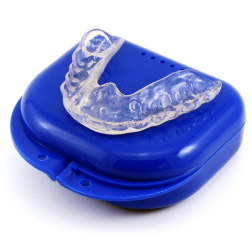
- Most Popular
- Hard Outside, Soft Inside
- 2MM Thick
- Moderate / Heavy
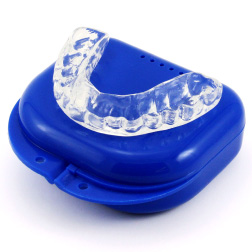
- Most Durable
- Hard Materials
- 1.5MM Thick
- Heavy / Severe
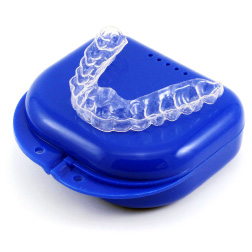
- For Day Time Use
- Thin, Barely Visible
- 1MM Thick
- Light / Moderate
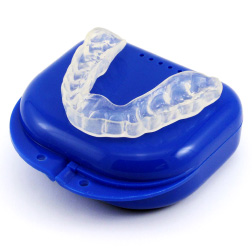
- For Clenching
- Flexible & Soft
- 1.5MM Thick
- Light / Moderate

